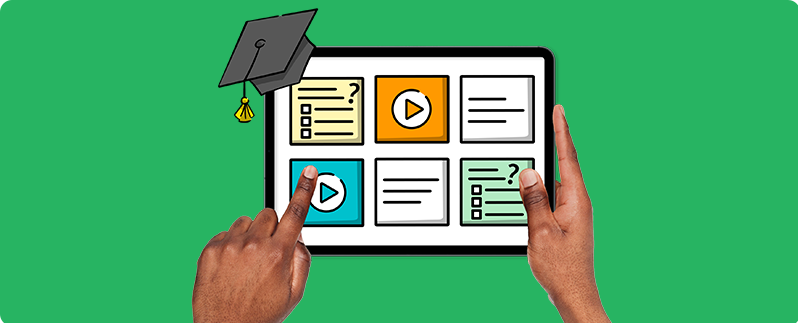Want to Improve Your Child’s Financial Literacy? Combine Tech and Personal Experiences
How to manage money is a lesson that everyone needs to learn. Up until recently, financial literacy was not a critical lesson, especially for children. However, in the wake of these turbulent economic times, the increasing student loan debt that people are constantly reminded of, and the general need to create a better life, parents and teachers are reminded of the importance of teaching children financial literacy.
Like with all things in life, personal experiences are the best teachers. The digital era also shows that students today learn better where education is taught through technology. So how can an educator use technology and life experiences to teach financial literacy?
Complicated financial problems can be simplified through technology. There are three ways in which instructors can make use of technology to teach young students how to make better financial decisions.
Explainer Videos

Explainer videos are a great way to teach financial literacy. These videos offer practical advice on all aspects of financial literacy: making financial decisions, saving, investing, interest rates, bank accounts, inflation…the list goes on! Videos are engaging and entertaining, and children can learn at their own pace because they are able to pause the video and resume it when they are ready. With images and scripts that tell a story, tools like mysimpleshow allow users to create explainer videos that provide great advice for children and young adults who want to save money, invest, and improve their financial lives.
Budget Simulations
When it comes to learning, nothing beats experiences. As an educator, you need to encourage children to create and stick to budgets. There are online apps that can assist in the creating of a budget, designed in a child-friendly manner. Hiring a private tutor could also help your child learn more about how to manage their money and make better investment decisions. Creating a budget will allow them to know what items are essential and which items are just luxuries that can be foregone. Budgeting maybe one of the most important aspects of financial management!
Game-Based Learning
There are many gaming sites that provide practical money skills to students to help them learn the essentials of personal finance. Such sites ensure that the young generation is able to stabilize the economy in the future through making better more informed financial decisions. Creating a gaming experience that also impacts education functions as both entertainment and as a way to educate students on what they ought to do and how they ought to behave. The best part about these games is that a child can begin playing them as soon as they begin to understand the value of money.
Apps and Online Programs on Tablets and Smartphones

Once you have decided that your child is old enough to have a tablet or a phone, buy them an interactive tablet or smartphone so they can download apps or use online software to learn about financial management. Teach your child how comparison shopping works and how to get true value for your money. There are applications where you can scan the bar code of a product you want to buy, and the app will tell you how much that products costs in local stores and on the internet. As an educator, you should also urge students to set reminders on their phones so they can check their credit scores annually. Seeing their credit scores will give them more reasons make better financial decisions.
The sooner one realizes the importance of saving and creating significant investments, the better. Other than an excellent education, financial literacy is the second best thing you can give your child, or any human being who needs it!
This article was authored by a regular blogger and writer Gregory Bennett. He loves to write about education and the latest technology. He keeps sharing his ideas and latest trends in education through his articles.

